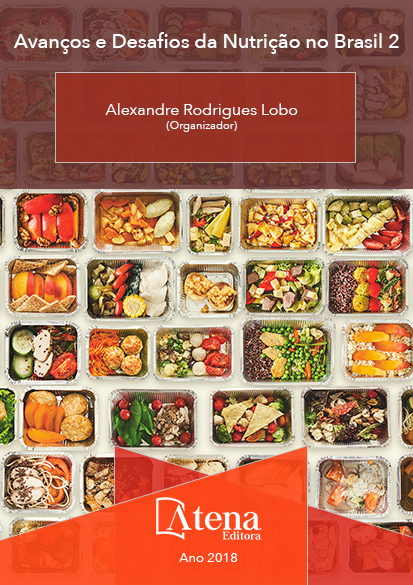
A relação de produção e tipos de safras de feijão com desnutrição de crianças
Os países em desenvolvimento
são essencialmente agrícolas e grandes
produtores de alimentos para o restante do
globo. Porém, os mesmos países têm como
o desafio o abastecimento de alimentos e
qualidade da nutrição em sua população. A
prática da boa alimentação inclui um dos pratos
mais tradicionais da culinária brasileira, o arroz
com feijão (Brasil, 2010). Embora o feijão faça
parte do cardápio de pessoas de baixa renda,
o objetivo do trabalho foi comparar através
de tratamento estatístico se existe a relação
da nutrição de crianças de 5 até 10 anos e a
produção de feijão em Itapeva. Foi realizada a
coleta dos dados na base de dados do SISVAN
durante os meses dos anos de 2015, 2016 e
2017, conjuntamente com os dados da colheita
do feijão e das produções entre 2015 à 2017.
Os tipos de safras consideradas durante o
período analisado foram: a safra de feijão das
águas (TSA), a safra de feijão da seca (TSB)
e a safra de feijão do inverno sem irrigação
(TSC). Considerando a variável TS a casela de
referência é TSA, a OR = 219,9123 indica que
ocorrência da desnutrição infantil tem TSB é 219
vezes a ocorrência de desnutrição que TSA.
A ocorrência de desnutrição é maior na TSB.
Com relação ao fator APHec verificou-se que a
OR = 1,00, o fator não é considerado de risco,
ou seja, não há associação entre a ocorrência
de desnutrição e o APHec. De acordo com as
análises estatísticas é possível concluir que existe relação da produção agrícola de
feijão com o índice de desnutrição no município de Itapeva.
A relação de produção e tipos de safras de feijão com desnutrição de crianças
-
DOI: 10.22533/at.ed.9491802123
-
Palavras-chave: Distribuição Binomial em R, Nutrição, Produção de feijão Itapeva- SP, SISVAN.
-
Keywords: Binomial distribution in R, Nutrition, Bean Production in Itapeva, SISVAN.
-
Abstract:
Developing countries are essentially agricultural and large food producers
for the rest of the globe. However, the same countries have the challenge of supplying
food and quality of nutrition in its population. The practice of good food includes one of
the most traditional dishes of Brazilian cuisine, rice and beans (Brazil, 2010). Although,
the beans are part of the menu of low-income people. The objective of the study was
to compare by means of statistical treatment if there is a relationship between the
nutrition of children aged 5 to 10 years and the production of beans in Itapeva. Data
collection was carried out in the SISVAN database during the months of 2015, 2016
and 2017, together with the bean harvest and yield data between 2015 and 2017.
The types of crops considered during the analyzed period were: the bean crop of the
waters (TSA), the dry bean crop (TSB) and the winter bean crop without irrigation
(TSC). Considering the variable TS the reference box is TSA, the OR = 219.9123
indicates that occurrence of infant malnutrition has TSB is 219 times the occurrence of
malnutrition than TSA. The occurrence of malnutrition is greater in TSB. Regarding the
APHec factor, it was verified that the OR = 1.00, the factor is not considered risk, that is,
there is no association between the occurrence of malnutrition and APHec. According
to the statistical analysis it is possible to conclude that there is a relationship between
the bean crop production and the malnutrition index in the municipality of Itapeva.
-
Número de páginas: 15
- Juliano Souza Vasconcelos


